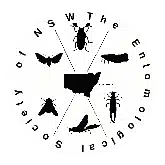Contents Vol. 44
GENERAL AND APPLIED ENTOMOLOGY
The Journal of the Entomological Society of New South Wales Inc.
VOLUME 44
DOMINIAK, B.C., EKMAN, J. and BROUGHTON, S. Mass trapping and other management options for Mediterranean fruit fly and Queensland fruit fly in Australia. . . . . . . 1
Some international trading partners are interested in the distribution of the lesser known Australian fruit flies. Historical and current records for Bactrocera jarvisi were reviewed. Despite historical reports claiming B. jarvisi as far south as Sydney, current records indicated that there were only two years in 15 when B. jarvisi was detected in low numbers in the New South Wales fruit fly surveillance grid. It is likely that these detections were from incursions that did not establish, rather than from local populations. Current records support the concept that B. jarvisi is closely linked to its native host, cocky apple, which is known to be distributed in northern Western Australia, Northern Territory and the Queensland coast down to Maryborough. All states and territories other than Queensland, Northern Territory and Western Australia should be considered free from B. jarvisi.
General and Applied Entomology 44: 1-7
DOMINIAK, B.C. and WORSLEY, P. Lesser Queensland fruit fly Bactrocera neohumeralis (Hardy) (Diptera: Tephritidae: Dacinae) not detected in inland New South Wales or south of Sydney. . . . . . . 9
MARSHALL, K.L. and HERON, G.A. Resistance monitoring in Australian Franklinella occidentalis: establishment of phorate baseline, detection of thiamethoxam resistance, and a new management strategy for use in processing tomatoes. . . . . . . 59
Modern sequencing technologies such as massively parallel sequencing with high throughput require input of high quality DNA. Numerous methods exist for the isolation of high quality DNA from insects, including commercially available kits such as the DNeasy Blood and Tissue kit (Qiagen) and the Isolate II Genomic DNA kit (Bioline). Here we isolated DNA from Helicoverpa armigera (cotton bollworm or old world bollworm) using the DNeasy method and the Isolate II Genomic DNA kit, and assessed the use of pure, high molecular weight extracts for genotyping by sequencing. High quality DNA suitable for genotyping by sequencing was only achieved using the DNeasy Blood and Tissue kit. Furthermore, selective tissue sampling from the head only proved vital in obtaining high quality DNA, with extracts from the thorax and abdomen often degraded or containing low molecular weight contaminants.
General and Applied Entomology 44: 59-64
SMITH, G. New Atelurinae (Zygentoma: Nicoletidae) from northern Australia. . . . . . . 19
The Australian silverfish fauna is reviewed at the level of genus, based on the literature and almost 1000 additional collection events. The morphology, biology and collection methods for the Zygentoma are briefly reviewed. A key to the genera found in Australia is provided. Seventy species in 23 genera in two of the five extant families have now been described. Of these, six species are introduced cosmopolitan anthropophilic species, although only one of these (Ctenolepisma longicaudata Escherich) is common and of only limited economic importance. The fauna demonstrates a high degree of endemism with 88% of described species and 52% of genera known only from Australia. Four (of six) subfamilies of the Lepismatidae are represented by autochthonous species. The lepismatid genera Acrotelsella Silvestri and Heterolepisma Escherich are very abundant but only a very small percentage of their species have been described; both genera have ranges extending beyond Australia. Within the Nicoletiidae, three of the five subfamilies are represented, many collected from deep subterranean habitats via mining exploration bore holes and many still undescribed. Eight genera of the inquiline Atelurinae belong to a single tribe, the Atopatelurini, with Wooroonatelura Smith currently unplaced. Four of these supposedly inquiline genera have been collected from caves or deep subterranean habitats with no obvious host association. The zoogeography of this ancient Order and conservation issues are discussed.
General and Applied Entomology 44: 9-58
BOOK REVIEW
A Complete Field Guide to the Butterflies of Australia. . . . . .17
Miniature Lives – Identifying Insects in Your Home and Garden. . . . .19
A Guide to the Mosquitoes of Australia. . . . .65
Insects of South-Eastern Australia – An Ecological and Behavioural Guide. . . . .67
